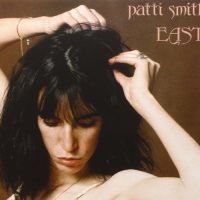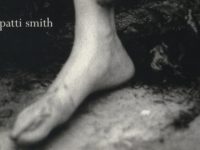There’s an argument I like to use when ‘defending’ music. It goes something like this: any particular piece of music (song or album) exists independent of its surroundings. I tend to use this argument when discussing music and/or bands that have become very popular over time. Good examples might be Led Zeppelin in the classic-rock world and, say, Michael Jackson in the pop world.
A memorable use of this argument actually did come in the defense Led Zeppelin. The statement was made that, because the listener had “burned out” on them years ago, he considered the music “lame” and therefore had no use for it. Now, I can’t argue that it’s not possible to “burn out” on something. (This has happened to me too, but I tend to revisit things years later.) I can argue, however, that it’s not the music that has changed, it’s the listener.
OK, now I get to show what a musical hypocrite I am by contradicting myself. In the case of Patti Scialfa, my ‘rule’ doesn’t apply. Some artists are so inextricably linked to personal memories that they are lifted to a higher level – a kind of reverse guilt-by-association.
In her case, it’s the combined memories of years and years of Bruce Springsteen-related events: my first Bruce record (Darkness On the Edge of Town), show (Richfield Coliseum, River tour … Southside Johnny came out at one point and they played “I Don’t Want to Go Home”), walking into the University of Maine bookstore only to be surprised by Nebraska (I didn’t know it was coming out), driving with a college buddy on the Park Loop Road in Acadia National Park at 70 mph while singing along to “Badlands,” seeing Gary U.S. Bonds at the Cape Cod Coliseum, playing “Rosalita” to get cranked up before my first wedding ceremony (sorry Bruce, it didn’t work out), the Southside Johnny show at the University of Maine, my wife’s first show in Boston (a near-religious experience), and all those danged bootlegs.
This is not to say that Patti Scialfa’s music can’t stand on its own. Far from it. I fell in love with her voice during the first 30 seconds of 1993’s Rumble Doll. It’s a sexy, vaguely raspy instrument with more than a touch of Ronnie Spector’s vibrato. Patti used to sing the first verse of “Rumble Doll” during her solo/introduction at E Street Band shows – it killed every time.
Well, a lot changed over the next decade. For 23rd Street Lullaby, released on July 20, 2004, the theme was Patti Scialfa’s early years in New York. I tell ya, this woman knows how to write a great pop tune. There’s the lilting suggestiveness of the title track (I’m beginning to see that Bruce wasn’t joking when he wrote “Red-Headed Woman”), the almost country-ish swing of “City Boys,” the pretty and meditative “Young In the City” and the swelling near-gospel of “You Can’t Go Back.”
It’s this kind of record that makes me think back to parts of the 1970s, when “complete” albums came out like Rickie Lee Jones and Joni Mitchell’s Court & Spark.
Hats must also be doffed in the direction of producer Steve Jordan, who did a fine job combining a fairly large list of musicians. (A sample includes: Marc Ribot, Nils Lofgren, Larry Campbell, Bobby Bandiera, Will Lee, Greg Cohen, Bruce Springsteen, Jane Scarpantoni, John Medeski.) All of these guest players somehow sound like a band. And, before I forget, violinist Soozie Tyrell was such a good match for Patti’s voice – like ‘Patti’s Clarence,’ in my mind.
I’m fairly confident that I would have loved Patti Scialfa’s 23rd Street Lullaby, even without the “weight” of the past chiming in. Of course, I can’t prove it. But there’s no place here for empiricism. This is music: It just exists.
- Why the Rolling Stones’ Harrowing ‘Gimme Shelter’ is Still Revealing New Depths - November 18, 2024
- How Talking Heads’ ‘Fear of Music’ Opened Up a World of Art and Sound - August 5, 2024
- How Deep Cuts Propelled Bruce Springsteen’s ‘Born in the U.S.A.’ - June 4, 2024



